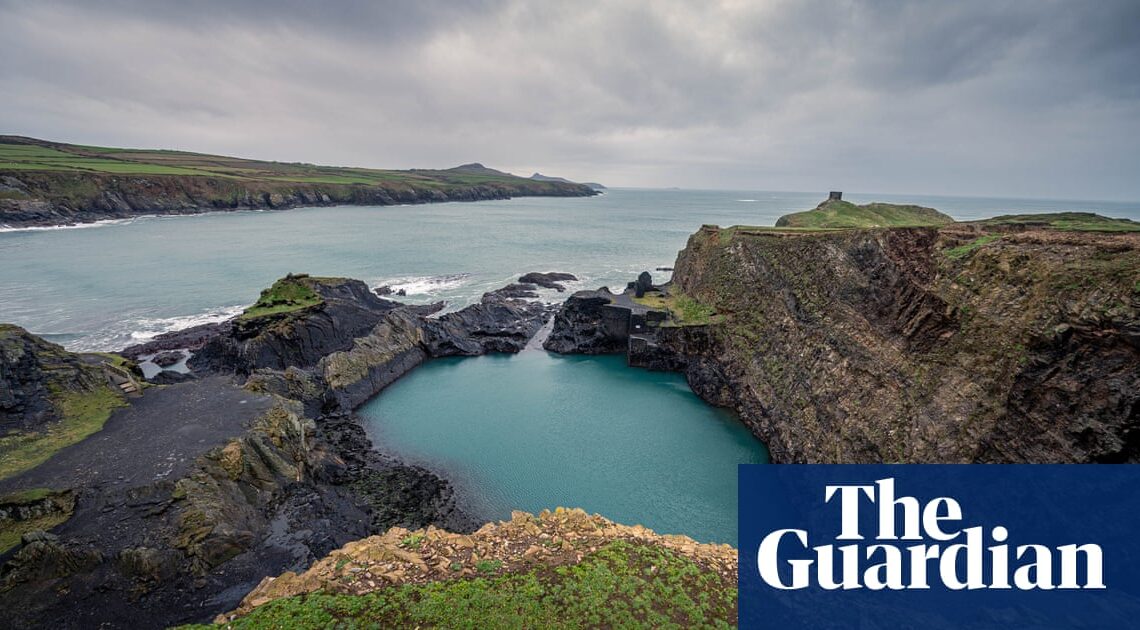The coastal hamlet of Abereiddy (Abereddi in Welsh) is not as sun-drenched or glamorous as Acapulco, but the two places share one claim to fame: both are renowned cliff diving destinations. The Welsh version is the Blue Lagoon at the northern end of Abereiddy Bay, a 30-metre drop into deep green water (it is not as blue as the name suggests), which has hosted the Red Bull Cliff Diving championships a number of times.
The “lagoon” is actually a former slate quarry, formed when its seaward wall was blasted open after it shut down in 1910. While there isn’t anyone flinging themselves from the top on my visit, there are wetsuited tourists coasteering around the lower levels of the lagoon and the surrounding cliffs. Pembrokeshire is the home of coasteering, which was “invented” here almost 40 years ago.
I stroll along Abereiddy’s black sand beach, which is famous in geological circles for its fossil graptolites: tiny, fragile-looking marine invertebrates embedded in Ordovician shale 450m years ago. I come across a couple impressed into pebbles, but leave them for someone else to discover, or for the sea to bury for another few million years.
From the beach I set off towards my destination, Porthgain. It’s a short but steep climb past the Blue Lagoon to the clifftop, 40 metres above the churning Irish Sea, and I follow the coast path between the cliff edge and green fields towards Traeth Llyfn. There’s a steep metal stairway down the cliffs to this lovely golden sand cove: it was installed when the natural steps worn into the soft, shaly cliffs became, as far as the authorities were concerned, too hazardous.
When I do this walk in August, I look out for grey seals and their new-born pups bobbing in the swell. They sometimes haul themselves on to beaches, in which case the advice is to remain at a good distance and keep disturbance to a minimum as they’re easily stressed.
Continuing along the coast path, I pass above the coves of Porth Egr, Porth Dwfn and Porth Ffynnon, all accessible only to kayakers and enthusiastic coasteerers, before coming across more remains of the coast’s industrial heritage in the form of derelict buildings and the bones of a tramway dotting the clifftops. This is all that’s left of a Victorian quarrying and brick-making industry that thrived until the early 20th century.
Slate quarried at…
Click Here to Read the Full Original Article at Travel | The Guardian…
